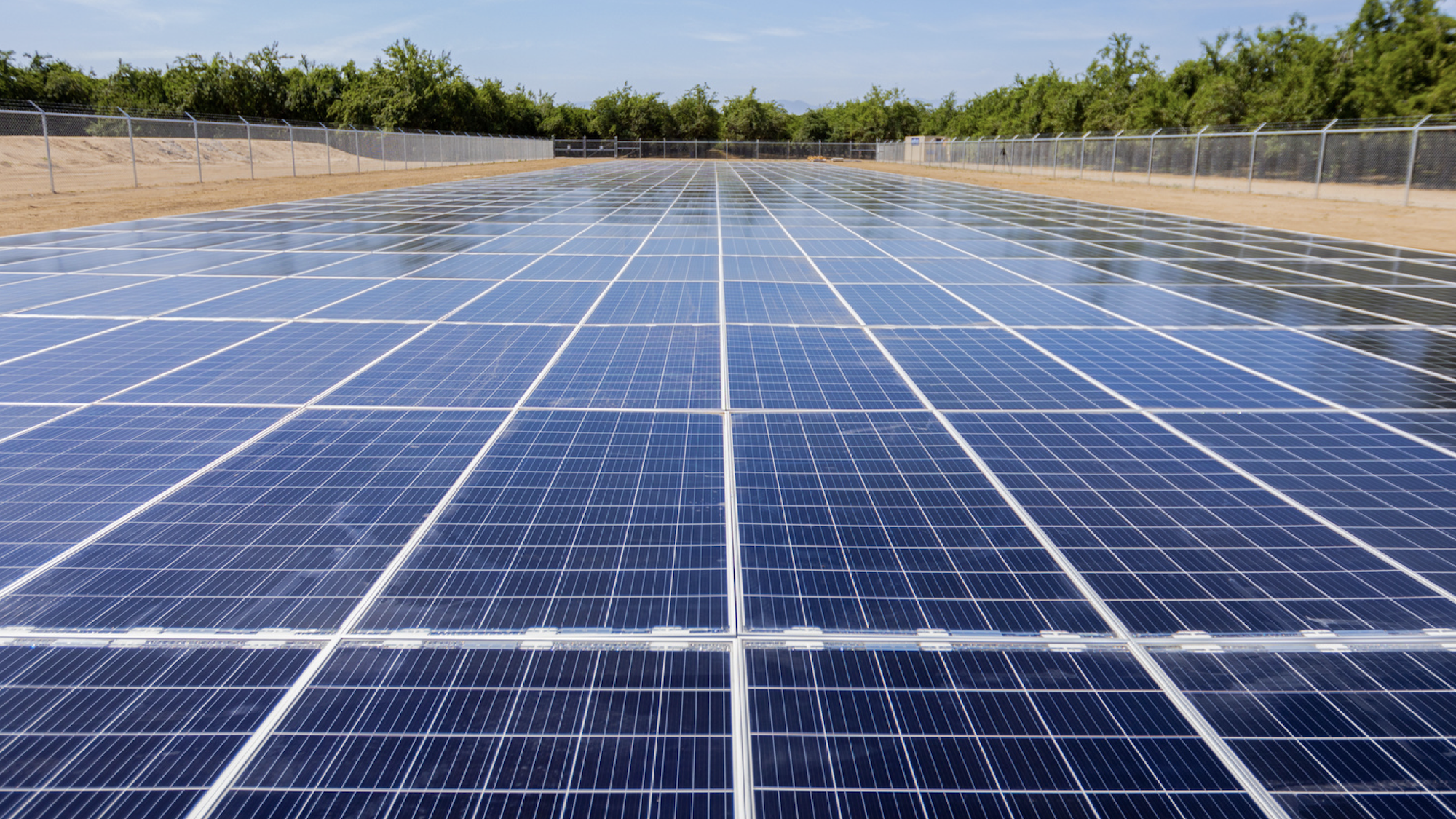

We may earn revenue from the products available on this page and participate in affiliate programs. Learn more ›
Solar power grid installation costs have dropped precipitously over the past decade, with arrays averaging nearly 90 percent cheaper in 2021 than in 2010. This is due to a number of key advancements in scalability, materials, and rapidly improving technology—but nothing lasts forever. Industry analysts predict solar power’s cost-benefit ratio is largely stabilizing, and may even backslide as global markets and supply chains constrict.
This also means that for solar power to continue to transition society towards green, renewable energy systems, designers will need to get creative on how to keep costs down while maintaining efficacy.
One potential solution courtesy of the solar installation startup, Erthos, is to embrace a hyper-minimalist approach to their panel arrays. The company recently announced a partnership with Industrial Sun for a radically designed, 100 megawatt (mW) utility-scale solar farm in Texas that does away with traditional elevated, racked setups in favor of installing panels directly across the ground. If successful, it could revolutionize the solar industry—and ease the concerns of understandably critical skeptics.
[Related: These powerful solar panels are as thin as a human hair.]
Picture a standard solar panel setup: the photovoltaic cells framed and propped up above the ground using metal frames and protective glass cases. Currently, the designs required to physically encase and support solar panel farms comprise around 20 percent of their total price tag. If engineers were to do away with them entirely, then overall costs could dramatically decrease while simultaneously cutting down on additional resource mining, production, and consumption. That’s exactly what Erthos aims to do, although there are a few reasons why this has never been tried at scale.
As Canary Media reports, solar experts have pointed towards issues such as the lack of airflow around a ground-installation scenario, which could hypothetically increase humidity and therefore attract organic materials like mold and fungus. Then there’s the ability to access broken panels in the middle of arrays without stepping on or damaging its surrounding siblings. Add ground instability and everyday varmints moseying around the areas, and there could be a recipe for failure.
[Related: This new floating solar farm follows the sun like a flower.]
By removing aluminum and glass racks and trackers, the company asserts it can construct a project in half the time on one-third of the land using 70 percent less cable and trenching. Proper protective fencing will keep critters and plant life away from the paneling, and small, mobile robots will safely traverse across the arrays’ surfaces for cleaning and minor repairs.
No one at Erthos is arguing there won’t be further opportunities for optimization and improvement, but as the company’s chief marketing and product officer, Daniel Flanigan, posited last year, one could look at traditional solar farming methods as the truly inefficient and burdensome approach compared to in-ground alternatives. Traditional methods, he adds, require triple the land, trenching, and cable requirements, large amounts of steel and other natural resources, driving piles into the ground, and all the additional mechanical complexities and issues that come with that.
Research estimates that wind and solar power sources need to comprise at least 40 percent of global energy by 2030 in order to realistically stem the worst effects of climate change—up from the estimated 10 percent currently used today. With such a giant shift, ongoing efforts to diminish the energy sector’s effects on local wildlife are crucial.
